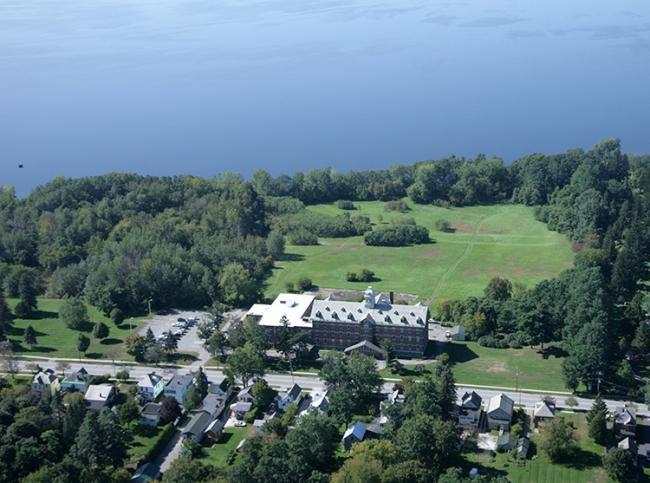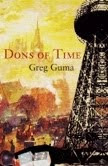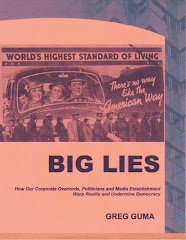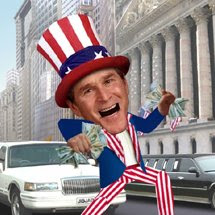These remarks by Greg Guma for a February 8, 2012 talk at the University of Vermont, explore the evolution of a segment for "Freedom and Unity: The Vermont Movie," which premieres on Vermont PBS Plus, a new HD broadcast service offering alternative programming and content from regional producers. The six-part documentary airs Monday – Saturday, July 14-19, at 8 p.m, revealing Vermont as you’ve never seen it! For more about The Vermont Movie, or to order a DVD copy, visit thevermontmovie.com. Vermont PBS Plus is available statewide over the air and through most cable providers.
The UVM talk, presented with Frank Bryan and Bruce S. Post, discussed The Road Not Taken: The Green Mountain Parkway Decision as a 'Tipping Point' in the History of Northern New England.”
Bryan, the John G. McCullough Professor of Political Science at UVM, was the main speaker. He presented findings related to his study of Vermont's rejection (by a popular referendum) of a New Deal proposal to build a "skyline drive-like" highway along the Green Mountains from Massachusetts to Canada. The seminar was presented as part of a series sponsored by the Center for Research on Vermont. Greg joined Post, former Director of Planning for the late Vermont Governor Richard A. Snelling, in providing commentary, context, and lessons that apply to current issues of development and wilderness.
Here are Greg's thoughts on the Parkway and its defeat:
As a journalist and story teller I am interested in much more than facts and events. I’m looking for underlying themes, dynamic tensions, the motivations of key figures in the drama, and the overall context of the story. In this case, like many people, I had heard just hints about some fight over a huge road during the Depression, and that it was ultimately rejected. It was a comforting but ambiguous nugget of information.
But when Nora Jacobson began working on The Vermont Movie, Robin Lloyd and I decided to revisit the Parkway fight, find out what happened, and attempt to dramatize it for the film. The trick would be to tell a complex story in five to ten minutes. My approach was to capture the times through a series of recreations, almost like a 1930s newsreel.
The research brought me to James Paddock Taylor, an ideal figure to represent the forces behind the road, Director of the Vermont Chamber of Commerce at the time, but more important also a founder of the Green Mountain Club, a strong believer in outdoor activity, in both physical and spiritual development. Yet Taylor saw the Green Mountains themselves as, in some respects, a barrier to needed change.
Twenty years before pushing the parkway, at a talk in Boston, he described Vermont’s mountains as both a blessing and a hindrance. “They have fostered local conservatism and narrowness of interest,” he said, as well as “an excess of individuality.”
Here was someone who saw himself and his projects as progressive, an optimist who wanted to create a more connected, less insular society. He viewed development on Vermont’s mountains as a way to open the minds of his fellow residents, basically to introduce the state to the modern world. For Taylor the Green Mountain Parkway was a progressive initiative that would spur the improvement and beautification of others roads and, more profoundly, encourage a “new state of mind,” what he called a modern and national outlook.
Progressive Visions
It’s fascinating to explore the evolving concept of progressiveness in Vermont. There had already been a Progressive era, which became influential in Burlington during the time of Mayor James Burke. There would be others – in the 1960s during the Hoff adminstration, and more recently, with Bernie Sanders and a Progressive Party. Each has had a distinct image, program and approach.
Taylor was trying to use the landscape as a tool to promote a popular 20th century vision of progress. He often tooled around the state in a Ford, calling it his “chariot of freedom.” Before showing why the Parkway didn’t happen on film, I felt that we needed to illustrate why many smart and influential people thought it was a positive and progressive idea. Thus, the first scene we developed has Taylor trying to sell his vision to a sympathetic Burlington Free Press reporter as they fly over the state.
When the reporter mentions that many folks don’t like the idea of the feds taking over 50,000 acres, Taylor snaps, “That’s just ignorant. What do they want, to stay isolated, separate?”
“Some people do,” says the reporter. “Or they’re for keeping the wilderness. Or, say we oughta be spending on roads and bridges.” It was more than five years after the 1927 flood and many roads still weren’t repaired. In the scene the reporter also mentions federal control and the idea of a national park cutting the state in half.
“Then explain it to them, son,” Taylor snaps. “This isn’t about spoiling anything, or some national take over. It’s about optimism, a modern state of mind. Getting out of the mountain mindset …and joining the world.” There it was: an aggressively progressive, but ultimately misguided vision, and hubris, a common problem among leaders.
Fighting Words
As a journalist, I was also interested in the role of the media. The Burlington Free Press actively promoted the Parkway. In March 1935, a year before the referendum, a Free Press editorial said saucily, “If our Washington Santa Claus wants to send us up ten millions to build a road over the side of our old Green Mountains, let’s graciously accept it and put the boys to work.”
Almost reflexively, The Rutland Herald, which already opposed Roosevelt’s New Deal, became a leading voice of opposition. Parkways supporters saw the newspaper as a vehicle for propaganda and disinformation. I went through the Herald archives and found two things – intense coverage and a clear editorial decision to provide a platform for opponents. In other words, the paper legitimized a critique of the progressive vision that was being promoted by the state’s political establishment.
We found articles with headlines like UNSPOILED VERMONT… GASH ON THE MOUNTAINSIDE… ELIMINATION OF THE WOODLANDS… TOLL GATES AT EVERY CROSSROAD… and PROCTOR FEARS PARKWAY WOULD STRANGLE BUSINESS. The last was a detailed critique by Mortimer Proctor, with sections on the charm of wilderness areas, state sovereignty and the danger of centralized government.
Here are a few statements that appeared in the Herald at the time:
“The parkway would take tourists out of the valleys, where we can sell things to them, into the hills, where we can’t…”--1935 editorial
“Vermont cannot afford to borrow half a million dollars or more…”
“A wilderness area now rich in game will be spoiled for hikes, sportsmen, horseback riders…”
“The State will be split in half, into East Vermont and West Vermont, with a wide strip of U.S. territory in the middle…”
Basically, a business-oriented vision of progress was running into what was, in some respects, a conservative, some even verging on isolationist backlash. For the film, we tried to dramatize these complex dynamics by creating archetypal constituents – a farmer, a naturalist, a merchant – and having a reporter solicit their views.
Seeking the Larger Context
Almost 80 years after the fact, the Parkway’s defeat in a Town Meeting day referendum still feels important and, I believe, can resonate for anyone struggling against federal or state overreach. When you have worked on long-shot activist campaigns, a success like this one – which can reasonably be interpreted as a “people’s victory” over centralized authority – is quite inspiring. It feels like a righteous battle between state power vs. people power, a defiant and successful revolt against conventional thinking.
The view does change somewhat when you look at what else was happening in Vermont at the time. Beyond the media dynamics, there was the Great Depression, high unemployment and industrial cutbacks. New Deal programs were attempting to prime the pump with public investments. But in Vermont there was considerable resistance to Roosevelt and his policies.
There were also major strikes – most notably the Granite Workers in 1933 and the Vermont Marble strike in the fall of 1935, the same period that the Green Mountain Parkway was being hotly debated. In November, the Herald did some red-baiting, saying that “communist influence” might be to blame for the Marble strike. On Thanksgiving a thousand strikers, with their families, marched through downtown Proctor in the rain. In December they were clashing with hired thugs.
A year later, a bill outlawing sit-down strikes passed in the legislature. Vermont was the first state to do this. George Aiken, who ran for governor against the New Deal in 1936, signed it in April 1937, although he wasn’t happy and worked to mend fences with labor over time.
In the midst of this deeply polarized period, after three years of establishment Parkway promotion and heated debate, the legislature finally took up the Green Mountain Parkway Act on December 14, 1935. The idea was to give the National Park Service jurisdiction over the land and appropriate the matching funds. Supporters pointed to 12,000 men on relief. They said that allocating $500,000 in state money to get $18 million in federal funds was a pretty great deal. They accused Parkway opponents of attempting to confuse people.
One legislator put it this way: “They say the land used will become alien territory. Now, that’s a red herring if ever I saw one. You know, the opposition is acting like a good criminal lawyer. And you know what they do: trot out fake issues to keep the jury’s attention off the main point.”
Opponents argued that the Parkway would lead to higher taxes or more debt, and called it a dangerous pipe dream that would never be completed. One lawmaker made his case by arguing that Vermonters have always been essentially conservative and fiercely independent. “So I ask you,” he said, “why shouldn’t this be the Vermont of today? The people of Vermont are sending out an SOS. Heed it, I beg you, and let the people decide.”
In the end, the Parkway was referred back to local communities for a March 3, 1936 referendum. The decision was both a way of passing off a hot political potato and a necessary deferral to local sentiment. Considering Vermont’s participatory democratic traditions, you might wonder why this hasn’t happened more often.
Officially, the choice offered to voters was between two start dates – immediately or five years in the future. But most people understood that it was really now or probably never. Majorities in northern counties – Chittenden, Franklin, Grand Isle, Lamoille, Washington – like the idea. But statewide the vote was 43,176, those who preferred to think about it later – or not at all – to 31,101 who wanted to move ahead fast.
The opposition had successfully appealed to core values like independence, resistance to outside control, frugality and distrust. Taylor felt the outcome also pointed to a “mysterious psychology” that was limiting the state. In his view, people who opposed the Parkway opposed progress itself. They wanted to remain “different.” He saw this as a long-term disadvantage and was determined to make Vermont more like the rest of the country.
At the core of the opposition was suspicion of government, along with concern about state’s rights. People weren’t talking directly about the environmental impacts. But they did say that the road “just didn’t fit,” that such an enormous project would turn the ridgeline into alien territory. “It’s like asking for a scar, saying we want to cut up this beautiful place,” one person told the newspaper.
For many it was about scale. The Parkway was just too damn big.
History Lost and Found
Was the decision enlightened or selfish, provincial or progressive, conservative or radical? The dynamics remains difficult to categorize to this day.
For me, it is a reminder – that categories like progressive and conservative can be inadequate and even distracting at time. And also that even when such a project is unpopular and ill-conceived, it can be hard to kill. It reminds me of the Connector road proposed from the Interstate to downtown in Burlington – still being discussed after more than 40 years. They also call that a Parkway, a pleasant image for a road, better than a highway or even a freeway.
The National Park Service was still recommending the Green Mountain Parkway as part of an Appalachian Parkway system in 1960. That’s the power of obsolete thinking, a relentless force behind many bad decisions.
A final thought. People ask why such an iconic incident isn’t more widely known and celebrated? First of all, it was embarrassing to the political establishment. The editors at the Free Press certainly didn’t have any motivation to spread the word, and as the years passed, Taylor’s type of progressiveness gained considerable traction.
History is written by the winners, as they say, and the Parkway story – so inspiring to many people now – was a defeat for the powers-that-were. Why would they recount a story that promotes the dangerous idea that if you don’t like some mega-project you can organize effectively to stop it?
When I moved to Vermont in 1968 and began writing for the Bennington Banner, I would occasionally approach Vermont Life, the state’s house organ, with a story idea. What about a feature on all the newcomers to the state, or on the communes being formed? The pictures could be great. The answer was usually blunt: This isn’t the image we want to project.
These days, given the considerable state pride about how Vermont differs from other places – and sometimes takes the lead – state government and contemporary media tend to downplay the type of conservative, almost isolationist thinking that played a considerable role in the Parkway debate and has influenced other aspects of Vermont history.
Today Vermont would be unlikely to reject federal assistance, especially during an economic crisis – the type of Tea Party, anti-government attitude that led Florida to reject stimulus funds. In contrast, one of the top Vermont stories last year was how quickly Vermont bounced back from Hurricane Irene and subsequent flooding, an success made possible by federal aid and active cooperation between all levels of government.
Inspiring stories, especially those that don’t fit into a convenient political narrative, are often winnowed out of the “official” story. If we’re not paying close attention, we can lose important parts of our history – even in a digital age.
But the only thing guaranteed is change, and changing conditions – in our time struggles over federal authority, health care, Vermont Yankee and other state-federal conflicts -- along with the work of essential thinkers like Frank Bryan, can help us to reclaim and better understand our past.































